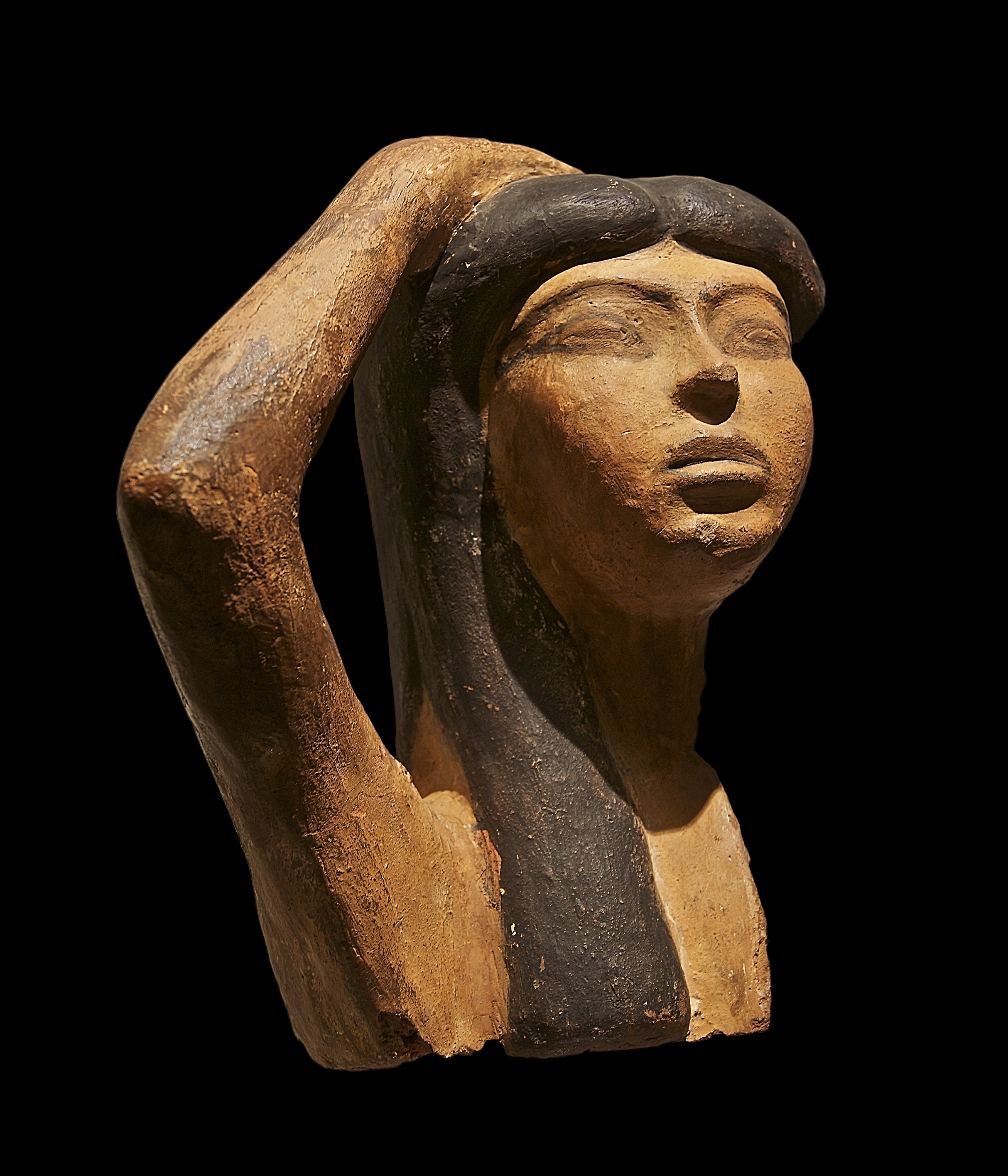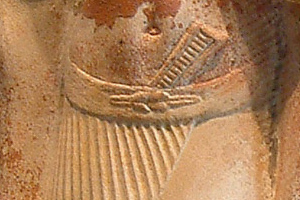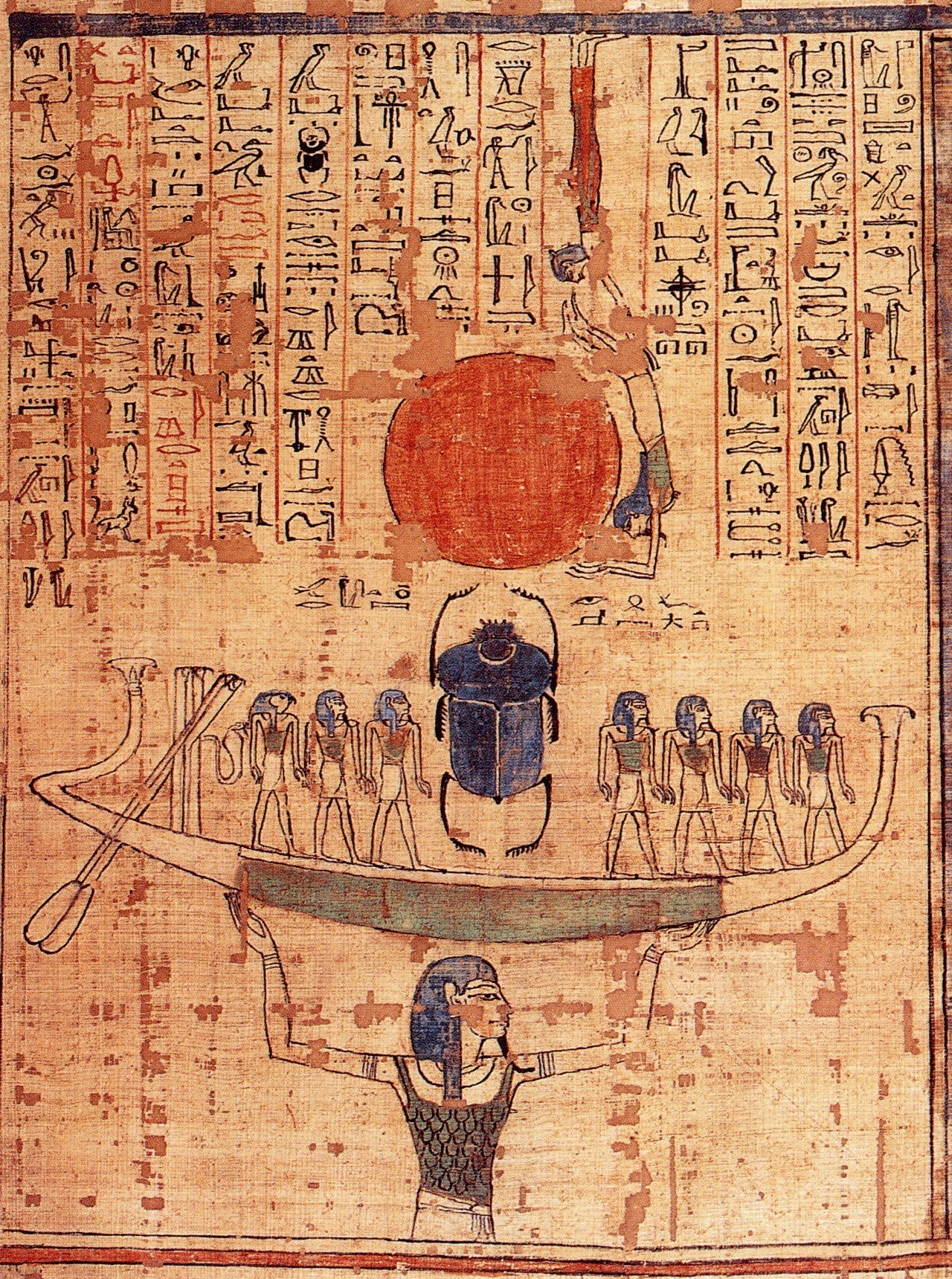|
Tyet
The tyet (), sometimes called the knot of Isis or girdle of Isis, is an ancient Egyptian symbol that came to be connected with the goddess Isis. Its hieroglyphic depiction is catalogued as V39 in Gardiner's sign list. History In many respects the ''tyet'' resembles an ankh, except that its arms curve down. Its meaning is also reminiscent of the ankh, as it is often translated to mean "welfare" or "life". The ''tyet'' resembles a knot of cloth and may have originally been a bandage used to absorb menstrual blood.Griffiths 2001, p. 190 An early example of a ''tyet'' sign comes from a First Dynasty tomb at Helwan, excavated by Zaki Saad in the 1940s. This example predates the first written references to Isis and may not have been connected with her at the time. In later times, it came to be linked with her and with the healing powers that were an important aspect of her character. ''Tyet'' amulets came to be buried with the dead in the early New Kingdom of Egypt (c. 1550–10 ... [...More Info...] [...Related Items...] OR: [Wikipedia] [Google] [Baidu] [Amazon] |
Isis
Isis was a major goddess in ancient Egyptian religion whose worship spread throughout the Greco-Roman world. Isis was first mentioned in the Old Kingdom () as one of the main characters of the Osiris myth, in which she resurrects her slain brother and husband, the divine king Osiris, and produces and protects his heir, Horus. She was believed to help the dead enter the afterlife as she had helped Osiris, and she was considered the divine mother of the pharaoh, who was likened to Horus. Her maternal aid was invoked in healing spells to benefit ordinary people. Originally, she played a limited role in royal rituals and temple rites, although she was more prominent in funerary practices and magical texts. She was usually portrayed in art as a human woman wearing a throne-like hieroglyph on her head. During the New Kingdom (), as she took on traits that originally belonged to Hathor, the preeminent goddess of earlier times, Isis was portrayed wearing Hathor's headdress: a ... [...More Info...] [...Related Items...] OR: [Wikipedia] [Google] [Baidu] [Amazon] |
Knot (hieroglyph)
The ancient Egyptian knot hieroglyph, or ''girdle knot'', Gardiner sign listed no. S24, portrays a reef knot. Besides its use as a hieroglyph, it has usage in statuary and reliefs. The knot hieroglyph is also an amulet, typically made of worked stone, or as jewellery elements. Language usage The knot hieroglyph is used in the Egyptian language as the verb, ''(th)s, (th)ss'', for to knot, to tie, to tie together, etc.V13:S24:O34-.-V13:O34:O34-S24 It is used as the phonogram for ''(th)s'', as well as the determinative. There are many alternate spellings. For the noun, it is Egyptian language ''(th)s, (th)s.t'', S24:X1*Z1-.-S24:Z1-.-S24:O34-Z7:D40-.-S24:O34-G43-F41 for meanings of: knot, tie, ligature, backbone, vertebrae, spine, etc. In jewellery and decoration The knot used as an article of jewellery was especially known in the Middle Kingdom. It can be found in necklaces (see gallery photo), and as a small brooch. In ''Amulets of Ancient Egypt,'' a two-part, hollow gold piece i ... [...More Info...] [...Related Items...] OR: [Wikipedia] [Google] [Baidu] [Amazon] |
Egyptian Faience
Egyptian faience is a sintered-quartz ceramic material from Ancient Egypt. The sintering process "covered [the material] with a true vitreous coating" as the quartz underwent vitrification, creating a bright lustre of various colours "usually in a transparent blue or green isotropic glass". Its name in the Ancient Egyptian language was , and modern archeological terms for it include sintered quartz, glazed frit, and glazed composition. is distinct from the crystalline pigment Egyptian blue, for which it has sometimes incorrectly been used as a synonym. It is not faience in the usual sense of tin-glazed pottery, and is different from the enormous range of clay-based Ancient Egyptian pottery, from which utilitarian vessels were made. It is similar to later Islamic stonepaste (or "fritware") from the Middle East, although that generally includes more clay. Egyptian faience is considerably more porous than glass proper. It can be cast in molds to create small vessels, jewelry and d ... [...More Info...] [...Related Items...] OR: [Wikipedia] [Google] [Baidu] [Amazon] |
Egyptian Hieroglyphs: Rope-fiber-baskets-bags
''Egyptian'' describes something of, from, or related to Egypt. Egyptian or Egyptians may refer to: Nations and ethnic groups * Egyptians, a national group in North Africa ** Egyptian culture, a complex and stable culture with thousands of years of recorded history ** Egyptian cuisine, the local culinary traditions of Egypt * Egypt, the modern country in northeastern Africa ** Egyptian Arabic, the language spoken in contemporary Egypt ** A citizen of Egypt; see Demographics of Egypt * Ancient Egypt, a civilization from c. 3200 BC to 343 BC ** Ancient Egyptians, ethnic people of ancient Egypt ** Ancient Egyptian architecture, the architectural structure style ** Ancient Egyptian cuisine, the cuisine of ancient Egypt ** Egyptian language, the oldest known language of Egypt and a branch of the Afroasiatic language family * Copts, the ethnic Egyptian Christian minority ** Coptic language or Coptic Egyptian, the latest stage of the Egyptian language, spoken in Egypt until the 17th cent ... [...More Info...] [...Related Items...] OR: [Wikipedia] [Google] [Baidu] [Amazon] |
Egyptian Mythology
Egyptian mythology is the collection of myths from ancient Egypt, which describe the actions of the Egyptian pantheon, Egyptian gods as a means of understanding the world around them. The beliefs that these myths express are an important part of ancient Egyptian religion. Myths appear frequently in Egyptian Ancient Egyptian literature, writings and Art of ancient Egypt, art, particularly in short stories and in religious material such as hymns, ritual texts, Ancient Egyptian funerary texts, funerary texts, and Egyptian temple, temple decoration. These sources rarely contain a complete account of a myth and often describe only brief fragments. Inspired by the cycles of nature, the Egyptians saw time in the present as a series of recurring patterns, whereas the earliest periods of time were linear. Myths are set in these earliest times, and myth sets the pattern for the cycles of the present. Present events repeat the events of myth, and in doing so renew ''maat'', the fundament ... [...More Info...] [...Related Items...] OR: [Wikipedia] [Google] [Baidu] [Amazon] |
Oxford Encyclopedia Of Ancient Egypt
''The Oxford Encyclopedia of Ancient Egypt'', edited by Donald B. Redford and published in three volumes by Oxford University Press in 2001, contains 600 articles that cover the 4,000 years of the history of Ancient Egypt, from the predynastic era to the seventh century CE. Articles cover art, architecture, religion, language, literature, politics, trade, everyday social life, and court culture in the Nile Valley. Awards *2001 Choice Outstanding Academic Title *2001 ''Library Journal'' Best Reference *2002 American Library Association (ALA)/RUSA Dartmouth Medal Outstanding Reference Source *2002 Association of American Publishers The Association of American Publishers (AAP) is the national trade association of the American book publishing industry. AAP lobbies for book, journal and education publishers in the United States. AAP members include most of the major commercial ... Best Multivolume Reference, Humanities References 2001 non-fiction books Encyclopedia Of Anci ... [...More Info...] [...Related Items...] OR: [Wikipedia] [Google] [Baidu] [Amazon] |
Knossos
Knossos (; , ; Linear B: ''Ko-no-so'') is a Bronze Age archaeological site in Crete. The site was a major centre of the Minoan civilization and is known for its association with the Greek myth of Theseus and the minotaur. It is located on the outskirts of Heraklion, and remains a popular tourist destination. Knossos is considered by many to be the oldest city in Europe. Knossos is dominated by the monumental Palace of Minos. Like other Minoan palaces, this complex of buildings served as a combination religious and administrative centre rather than a royal residence. The earliest parts of the palace were built around 1900 BC in an area that had been used for ritual feasting since the Neolithic. The palace was continually renovated and expanded over the next five centuries until its final destruction around 1350 BC. The site was first excavated by Minos Kalokairinos in 1877. In 1900, Arthur Evans, Sir Arthur Evans undertook more extensive excavations which unearthed most of th ... [...More Info...] [...Related Items...] OR: [Wikipedia] [Google] [Baidu] [Amazon] |
Minoan Snake Goddess Figurines
Two Minoan snake goddess figurines were excavated in 1903 in the Minoan palace at Knossos in the Greek island of Crete. The decades-long excavation programme led by the English archaeologist Arthur Evans greatly expanded knowledge and awareness of the Bronze Age Minoan civilization, but Evans has subsequently been criticised for overstatements and excessively speculative ideas, both in terms of his "restoration" of specific objects, including the most famous of these figures, and the ideas about the Minoans he drew from the archaeology. The figures are now on display at the Heraklion Archaeological Museum (AMH). The Knossos figurines, both significantly incomplete, date to near the end of the neo-palatial period of Minoan civilization, around 1600 BCE. It was Evans who called the larger of his pair of figurines a "Snake Goddess", the smaller a "Snake Priestess"; since then, it has been debated whether Evans was right, or whether both figurines depict priestesses, or both ... [...More Info...] [...Related Items...] OR: [Wikipedia] [Google] [Baidu] [Amazon] |
Minoan Civilization
The Minoan civilization was a Bronze Age culture which was centered on the island of Crete. Known for its monumental architecture and energetic art, it is often regarded as the first civilization in Europe. The ruins of the Minoan palaces at Knossos and Phaistos are popular tourist attractions. The Minoan civilization developed from the local Neolithic culture around 3100BC, with complex urban settlements beginning around 2000BC. After 1450BC, they came under the cultural and perhaps political domination of the mainland Mycenaean Greeks, forming a hybrid culture which lasted until around 1100BC. Minoan art included elaborately decorated pottery, seals, figurines, and colorful frescoes. Typical subjects include nature and ritual. Minoan art is often described as having a fantastical or ecstatic quality, with figures rendered in a manner suggesting motion. Little is known about the structure of Minoan society. Minoan art contains no unambiguous depiction of a monarch, and t ... [...More Info...] [...Related Items...] OR: [Wikipedia] [Google] [Baidu] [Amazon] |
Late Period Of Ancient Egypt
The Late Period of ancient Egypt refers to the last flowering of native Egyptian rulers after the Third Intermediate Period in the 26th Saite Dynasty founded by Psamtik I, but includes the time of Achaemenid Persian rule over Egypt after the conquest by Cambyses II in 525 BC as well. The Late Period existed from 664 BC until 332 BC, following a period of foreign rule by the Nubian 25th Dynasty and beginning with a short period of Neo-Assyrian suzerainty, with Psamtik I initially ruling as their vassal. The period ended with the conquests of the Persian Empire by Alexander the Great and establishment of the Ptolemaic dynasty by his general Ptolemy I Soter, one of the Hellenistic diadochi from Macedon in northern Greece. With the Macedonian Greek conquest in the latter half of the 4th century BC, the age of Hellenistic Egypt began. History 26th Dynasty The Twenty-Sixth Dynasty, also known as the Saite Dynasty after its seat of power the city of Sais, reigned from ... [...More Info...] [...Related Items...] OR: [Wikipedia] [Google] [Baidu] [Amazon] |
Book Of The Dead
The ''Book of the Dead'' is the name given to an Ancient Egyptian funerary texts, ancient Egyptian funerary text generally written on papyrus and used from the beginning of the New Kingdom of Egypt, New Kingdom (around 1550 BC) to around 50 BC. "Book" is the closest term to describe the loose collection of texts consisting of a number of magic spells intended to assist a dead person's journey through the ''Duat'', or underworld, and into the afterlife and written by many priests over a period of about 1,000 years. In 1842, the Egyptologist Karl Richard Lepsius introduced for these texts the German name ''Todtenbuch'' (modern spelling ''Totenbuch''), translated to English as 'Book of the Dead'. The original Egyptian name for the text, transliterated , is translated as ''Spells of Coming Forth by Day''. The ''Book of the Dead'', which was placed in the coffin or burial chamber of the deceased, was part of a tradition of funerary texts which includes the earlier Pyramid Texts and ... [...More Info...] [...Related Items...] OR: [Wikipedia] [Google] [Baidu] [Amazon] |





